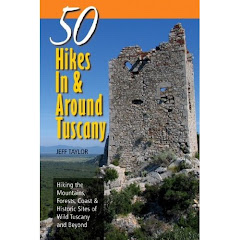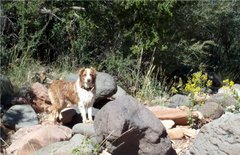Distance: 5 miles (8 km)
Elevation: 2,400 - 3,760 feet (730 - 1145 m)
Difficulty: Moderately Strenuous
Time of Year: October - April
If you are looking for a sweat-inducing spring hike in the Sonoran Desert, with a rewarding and spectacular view at the top, then the Peralta Trail may be just for you. Located on the southern slopes of the Superstition Mountains, it also offers some interesting ecological and geological features most people in the Phoenix area do not realize is right in their back yard.
To get there, take US-60 east out of Phoenix and drive past Apache Junction and then follow it as it curves southeast on its way to Globe. Look for the new developments of Kings Ranch and shortly thereafter look for Peralta Road. Take a left on Peralta Road. The road will pass another development and then heads off onto a well-graded dirt road which you will follow for 7 miles to the trailhead.
Warning: This trail has been discovered, so get there early in the morning and avoid weekends if you want a parking spot or at least want to enjoy the view without throngs of people.
The trail follows a drainage filled with lush sugar sumacs and scrub live oaks. All along the slopes are hedgehog cactus with their beautiful magenta blooms in spring. The trail heads steadily, but relentlessly up slope on its way to Fremont Saddle. The trail weaves across the dry bouldery drainage and up onto typical Sonoran desert vegetation of saguaros, barrel cactus, and mesquite. As you move higher up out of the low Sonoran ecotype, the vegetation shifts subtlely to upper Sonoran types such as agave, sotol, and grasses.
As you ascend, you will see yellowish-pink rocks to the right and darker brownish colums on the left. You are hiking inside the core of an ancient volcanic caldera. The Superstition Mountains represent the remains of a large volcanic eruption about 18 million years ago. Much of the lighter material is welded tuff, which is volcanic ash that was launched into the air, but was still so hot that when it landed it melted together to form layers of rock. The dark materials are cooled magma that was not ejected.
As the magma cooled it formed columns underground and after millions of years of erosion, these columns have emerged from the surrounding rock in this organ pipe formation. The trail then crosses the drainage (may be flowing in winter and spring) and heads out on the light colored tuff, where it switchbacks several times until reaching Fremont Saddle.
 |
| The view of Weaver's Needle from Fremont Saddle Lone Pine Overlook (far right) can be reached as a short side trip |
At the saddle is a spectacular view of Weaver's Needle and the Superstition Wilderness beyond. The needle is an erosional core of the ancient volcano and really stands out. To the northeast (right of Weaver's Needle) is a large pine that stands out on the ridge. This spot is called Lone Pine Overlook and can be reached as a short side trip.
You may choose to continue on Peralta Trail down the slope to the base of Weaver's Needle. For the really adventurous souls, amazingly there is a way-trail that climbs up the slope of the Needle and accesses the summit of it without any technical climbing skills. We have no attempted that though. However, most people simply make Fremont Saddle their end point and return the way they came.
















































